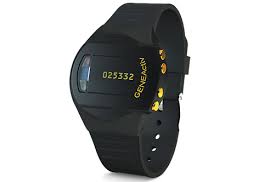9 February 2022

Technology has an increasingly important and pervasive role in our daily lives. Smartphones and wearable sensors are increasingly becoming more affordable and embraced by people for the convenience they can offer in daily tasks. For example, nowadays we take smartphones for granted, and it is all too easy to forget that the iPhone became commercially available in the not-too-distant 2007, leading the subsequent boom in the smartphone market. Similarly, wearable sensors have been gaining increasing ground over the last 5-10 years, mostly used by people to monitor daily activity and sleep patterns.
An exciting new dimension these technological advances have brought in is their application towards healthcare and longitudinal understanding of daily living characteristics (for example, in terms of physical activity and sleep patterns). This is a fast-developing research area with enormous potential, which our research group is focusing on. One of the key advantages of using smartphones and wearable sensors is that we can effectively understand how people behave in their day-to-day lives, at home and at work, over a long period. This has considerable advantages to understanding people’s health and social behaviors compared to traditional research studies, which involve detailed one-off interviews or assessments.
A large part of our research work is on the development of new ways to process the collected data in smartphones and wearable sensors, beyond the existing capabilities offered by traditional programs and devices which are commercially available (such as Fitbits). We achieve that by developing and applying new mathematical and statistical methods aiming to obtain insights into how people operate (such as whether they walk regularly, if they exercise and how intensely, how well they sleep).
Indicatively, we have previously demonstrated how we can use a smartwatch to understand intrinsic characteristics for certain conditions, such as understand how people who had stroke recover, and how people who had experienced traumatic events recover. Moreover, we have used additional wearable sensors to collect data which reflect heart activity and demonstrated how changes reflect changes in people’s mood over the course of the day.
As part of the Supporting Health Ageing at Work (SHAW) study, we aim to use participants’ self-assessments on how they feel and information we can collect from smartwatches to obtain a better understanding over the period of 1 year regarding people’s physical activity and sleep patterns, and how these are related with work aspects.
Indicative references
- K. Woodward, E. Kanjo, D. Brown, M. McGinnity, B. Inkster, D. MacIntyre, A. Tsanas. 2021. 'Beyond mobile apps: a survey of technologies for mental well-being', IEEE Transactions Affective Computing, (in press)
- S.R. Knight, N. Ng, A. Tsanas, C. Pagliari, E.M. Harrison. 2021. 'Mobile devices and wearable technology for measuring outcomes after surgery: a systematic review', npj Digital Medicine, Vol. 4:157
- M. Eades, A. Tsanas, S. Juraschek, D. Kramer, E. Gervino, K. Kumamal. 2021. 'Smartphone-recorded physical activity for estimating cardiorespiratory fitness', Scientific Reports, Vol. 11:14851
- H-Y. Chun, A.J. Carson, A. Tsanas, M.S. Dennis, G.E. Mead, C. Calabria, W. Whiteley. 2020. 'Telemedicine cognitive behavioural therapy for anxiety after stroke: proof of concept randomized controlled trial', Stroke, Vol. 51, pp. 2297-2306
- A. Tsanas, E. Woodward, A. Ehlers. 2020. 'Objective characterization of activity, sleep, and circadian rhythm patterns using a wrist-worn sensor: insights into post-traumatic stress disorder', JMIR mHealth and uHealth, Vol. 8(4), pp. e14306
- N. Palmius, A. Tsanas, K.E.A. Saunders, A.C. Bilderbeck, J.R. Geddes, G.M. Goodwin, M. De Vos. 2017. 'Detecting bipolar depression from geographic location data', IEEE Transactions on Biomedical Engineering, Vol. 64, No. 8, pp. 1761-1771
- A. Tsanas, K.E.A. Saunders, A.C. Bilderbeck, N. Palmius, M. Osipov, G.D. Clifford, G.M. Goodwin, M. De Vos. 2016. 'Daily longitudinal self-monitoring of mood variability in bipolar disorder and borderline personality disorder', Journal of Affective Disorders, Vol. 205, pp. 225-233
Dr Athanasios Tsanas (‘Thanasis’), BSc, BEng, MSc, DPhil(Oxon), SMIEE, FRSM, FHEA. Associate Prof. in Data Science, Medical School, University of Edinburgh